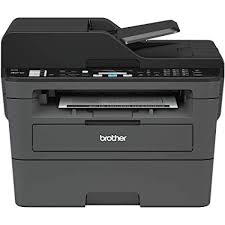 Printer Recommendations Printer Recommendations
Printer technology has improved and come down in price over the years. If your printer is no longer doing its job, here are some considerations for its replacement.
Color inkjet vs. Monochrome Laser vs Color Laser - Color inkjet manufacturers use the "razor blade" business model - they price the printer at a loss in order to make a lot of money on the ink cartridges. Cartridges are expensive, and
if you don't use the cartridges regularly, they will dry up. Alternatively, if you use the printer a lot, you will buy a lot of ink! If you are not a frequent printer, or if you are, and you don't need color printing, you are much better off with a monochrome (black only) laser printer. Laser printers usually cost more, and the cartridges are more expensive, but you can expect to print thousands of pages before you have to replace the toner cartridge.
The difference in total cost of ownership makes it worthwhile
Color laser printers have also come into their own. Newer models are much smaller and less expensive than they were just a few years ago. However, the quality of the color output is not as good as that of color inkjets, so keep that in mind if you plan to do photo printing. They are best for home users and small businesses who have some "spot color" needs.
Multi-function printers - Do you only want to print? Or would you like to copy, scan, and possibly fax? If so, a multi-function model is a good option. If you do a lot of copying or scanning, a model with an
automatic document feeder might be best. Keep in mind, even if a printer only prints with black ink, it scans in color. And fewer multi-function printers come with faxing capability these days - if you need to fax, make sure that it's included!
Connectivity - The simplest way to connect a printer is with a
USB printer cable - usually not included in the box. However, with most households printing from multiple devices, it's much more efficient to have a network enabled printer. While WiFi has become the standard, networking is more stable with a wired
Ethernet port that can be attached directly to your router. Once the printer is connected to the network it can be accessed wirelessly by any of your devices if they are set up correctly.
Printing from Mobile Devices -
Airprint technology means you can print from an iPhone or iPad.
Google Cloud Print is used to print from a Chromebook or an Android device.
ePrint is a method to print though HP's cloud servers - you create an email address for your printer, and then email what you need to print as an attachment.
If printing from a phone or tablet is important to you, make sure your new printer has the correct technology for your device before buying. Even with the technology built in, it is sometimes difficult to set up - give me a call if you need some help!
Automatic duplexing - some printers automatically flip the paper so you can print on both sides. Great for businesses, this functionality can save you money and paper. Keep in mind that if your printer has auto-duplexing and is Airprint enabled, prints from your iPhone and iPad will default to two-sided.
Brands - I tend to recommend HP or Canon for inkjet, and Brother for laser. I am not a big fan of Lexmark printers, as they seem to have quality issues.
As far as third party ink is concerned, I tend to buy genuine while the printer is still under warranty, and then switch to generic. However, I am cautious about where I buy the ink, and don't expect it to have the same quality as original OEM cartridges. Read on for more information about choosing third party ink.
|